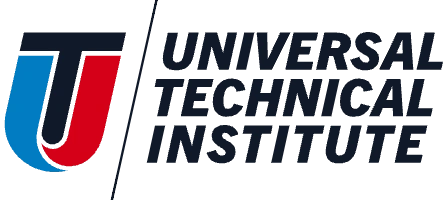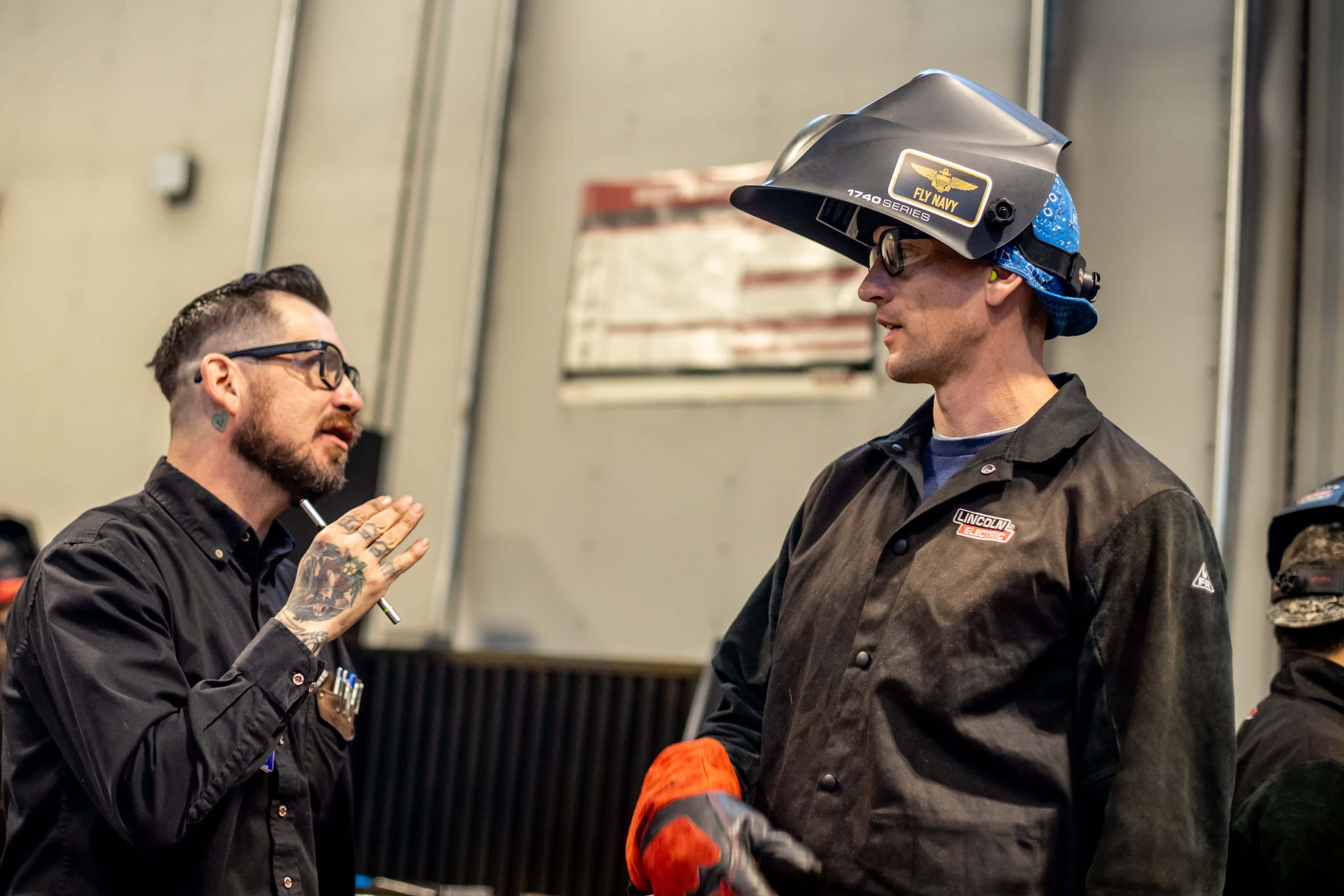Prepare for a Future in Welding
Our Welding Technology program helps students train for a career as a welder.1 These courses for welding students teach fundamental techniques used by professionals in a variety of industries, including construction, aerospace, transportation, manufacturing and fabrication.33
Introduction to Welding, Safety and Careers
This class is designed to provide a foundation for students to build upon in future courses of the welding program. Students will be introduced to various types of welding methods and the equipment used to perform them. Students will also be taught about personal protection and safety while operating welding equipment.
Also covered will be an introduction to two different types of thermal cutting using both plasma and oxy/fuel equipment. Students can also learn about the many careers and positions that a successful welder may pursue and how to obtain a weld certification in the industry.
Principles of Welding
Students will be introduced to the different types of joints, positions and symbols used throughout welding technology. Students can learn about the properties of metals, their classification and how to prepare tools for welding. Also covered will be welding inspection and weld defect testing.
Gas Metal Arc Welding I (GMAW-1)
In this introduction to gas metal arc welding (GMAW), also known as “MIG welding,” students are taught how to set up and use GMAW equipment and the accessories required to perform this welding technique. Also covered will be the modes of metal transfer and the different gases available to shield a weld.
Then, students can use a MIG welder to perform the basic positions of a lap, tee, butt, and butt with backing weld to produce steel fillet and groove-style joints in the flat and horizontal planes. They will also get a chance to learn basic GMAW maintenance methods, including gas hook-up and wire spool replacement.
Shielded Metal Arc Welding I (SMAW-1)
Students are introduced to shielded metal arc welding (SMAW), also known as “stick welding.” Also covered are the setup and use of SMAW equipment and the accessories required for SMAW welding.
Students can also learn the modes of metal transfer and the different electrodes/rods available to carry out specific types of welds. Then, students will have the opportunity to use a SMAW welding machine to perform the basic positions of a lap, tee and butt with backing weld to produce steel fillet and groove-style joints in the flat and horizontal planes.
Engineering and Fabrication
Within this course, students will get a lesson on how to read blueprints and interpret the codes, standards, terms and definitions used in welding documentation. Also covered will be the applied math, measurement and geometry skills needed for the planning, preparation and fabrication of projects. Students will also be introduced to project planning and quality control.
Gas Metal Arc Welding II (GMAW-2)
The GMAW-2 course builds upon the knowledge and skills taught in the introductory GMAW course. In addition to the flat and horizontal planes, students will perform vertical and overhead welds to produce lap, tee, and butt with backing joints on both steel and aluminum. Additionally, students can learn how to correctly maintain a GMAW welder, change out whips/guns, set up different shielding gases and replace the rollers.
Shielded Metal Arc Welding II (SMAW-2)
Students can bring the skills they have learned from stick welding in previous courses to perform horizontal, vertical and overhead welding operations on flat steel plate using fillet and groove-style joints. Additionally, students can learn how to correctly maintain and service a SMAW welder, replace the electrode/stick holder and perform carbon arc gouging on steel plate.
Flux-Cored Arc Welding (FCAW)
During this course, students can discover the benefits of both gas and gasless flux-cored welding and where they are used. Also covered is how to set up, service and operate flux-cored welding equipment. Students also get the chance to perform all joint types and carry out welds in the flat, horizontal, vertical and overhead planes.
Gas Tungsten Arc Welding (GTAW)
Students will be introduced to gas tungsten arc welding, its characteristics and safety. Using the information they have learned in previous courses, students are taught the skills necessary to make gas tungsten arc welds on different metals, using both direct and alternating current methods.
Pipe Welding
This course will introduce students to the different methods of welding pipe and tube using multiple types of metal transfer. Students can learn the welding positions used, from horizontal rolling to stationary or vertical, along with how to use the correct tools and equipment for the cutting and beveling of joints during assembly.
Welding Applications I (GMAW & FCAW)
As one of the final courses in our program, Welding Applications I is designed to allow students to build specific projects using the skills they have learned from previous welding courses. Students can fabricate specific projects using their previously learned blueprinting and project planning skills, along with both GMAW and FCAW metal transfer equipment. During this course, students can demonstrate their ability to perform multiple weld types in all positions.
Welding Applications II (SMAW & GTAW)
One of the final courses in our program, Welding Applications II is designed to allow a student to build specific projects using the skills they have learned from previous welding courses. Students can fabricate specific projects using their previously learned blueprinting and project planning skills, along with both SMAW and GTAW metal transfer equipment. During this course, students can demonstrate their ability to perform multiple weld types in all positions.
FAQs
UTI's welding classes prepare students to pursue certifications from industry-recognized organizations, such as the American Welding Society (AWS) after graduation. These certifications demonstrate your ability to meet specific industry standards and can include specialties like structural welding or pipe welding. Earning certifications can enhance your job prospects and qualify you for more advanced roles in the welding field.
UTI’s welding training combines classroom instruction with hands-on practice to prepare students to pursue real-world welding jobs after graduation. Students train with industry-aligned equipment and learn techniques such as MIG, TIG, stick and flux-cored arc welding. The curriculum also covers essential skills like blueprint reading, safety protocols and metal preparation, to help graduates prepare to pursue entry-level roles in various industries.
UTI provides career services to assist graduates in finding open welding roles.1 These services include resume assistance, interview preparation and connections to employers in industries like manufacturing, construction and transportation. By using these resources, graduates can improve their chances of securing positions in their chosen field.
Yes, students have the opportunity to learn specific welding processes during their training. UTI’s program, for example, teaches a variety of welding techniques, including MIG, TIG, stick and flux-cored arc welding. This allows students to develop skills in the processes most relevant to their career goals, whether they want to work in industries like pipeline welding, aerospace or construction.
UTI’s welding courses combine both hands-on training and classroom instruction. While classroom time covers welding theory, safety and blueprint reading, the majority of learning in a welding class happens in the lab, where students practice real-world techniques using professional equipment.
Students in welding classes typically need safety gear like a welding helmet, gloves, protective clothing and steel-toed boots. UTI’s welding courses provide access to tools and equipment, but having your own basic gear may be required or recommended depending on the school or program.

